Publications

|
Srikumar M Menon God on the hill and other stories https://www.storywell.in/ecommerce/academic-c140582834/god-on-the-hill-p630090507 Storywell Books, New Delhi. ISBN 9789395373234 |
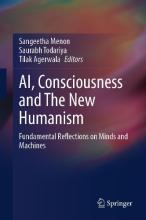
|
Sangeetha Menon AI,Consciousness and The New Humanism: Fundamental Reflections on Minds and Machines https://link.springer.com/book/10.1007/978-981-97-0503-0 Co-Authored With Saurabh Todariya and Tilak Agerwala, Springer, Singapore. ISBN 9789819705023 |
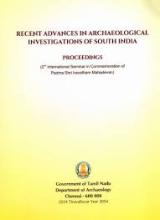
|
Sharada Srinivasan Early Finds of Forged Bronze and High-tin Bronze from Tamil Nadu and India In Rajan, K and Sivananthan (eds). Proceedings of the 2nd International Seminar on Recent Advances in Archaeological Investigations of South India, Roja Muthiah Library & Government of Tamil Nadu, Chennai, pp 78-89. |

|
Sharada Srinivasan Assaying the eight metals of antiquity: Archaeometallurgical perspectives on Indian heritage https://www.icts.res.in/lectures/MLmar2024 International Centre for Theoretical Sciences Archaeometallurgy pertains to the technological study of metallic archaeological artefacts and art objects to gain insights into the manufacturing techniques and history of technology. It can also help in the better classification of archaeological artefacts through studies on provenance and sources of metal. Archaeometallurgy is increasingly becoming a widely inclusive discipline of archaeology that attempts to trace the history of ancient metal production, distribution and usage in antiquity and the related socio-cultural and economic ramifications. The early metals to be exploited were those that were found in the native state, followed by those that could be smelted or reduced easily from ores, while those that were more difficult to smelt were discovered later. The commonly used metals in antiquity included gold, silver, copper, iron, tin, lead, zinc, and mercury. In the first lecture, Prof Sharada Srinivasan will explore the broader trajectory of the use of metals, and in Indian and particularly south Indian antiquity. The second two lectures point to some highlights of pre-industrial Indian contributions interspersed with insights from surviving craft traditions. These lectures draw on her archaeometallurgical studies on non-ferrous metallurgy in the skilled early use of high-tin bronzes and the making of statuary bronzes to the unique methods of extraction of metallic zinc, and in ferrous metallurgy in the use of wrought iron and high-carbon Steels and to later innovations such as the use of metal-cased rockets. Thus the lectures would point to the significance with respect to a broader global understanding of the history of science and technology. |
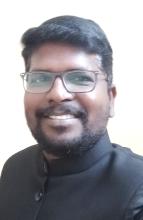
|
S Udayakumar Assistant Professor, School of Humanities Experimental archaeology and ethnoarchaeology- Pottery Techniques Perspective Udaykumar, S. (2024). 3rd International conference on History, Science and Technology of South Asian Ceramics. To commemorate Padma Shri Awardee IRAVATHAM MAHADEVAN , 5th- 9th January 2024. Madras. |
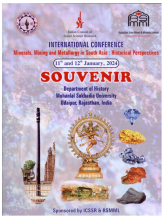
|
Sharada Srinivasan Keynote Lecture on Indian Metals Heritage: Some Archaeometallurgical Insights Souvenir of International Conference on Minerals, Mining and Metallurgy in South Asia: Historical Perspectives, Dept of History, Mohanlal Sukhadia University |

|
Sharada Srinivasan Professor, School of Humanities Indian Metals Heritage: Some Archaeometallurgical Insights. https://cms.nias.res.in/sites/default/filesefs/2025-04/Keynote_Lecture_on_Indian_Metals_Heritage%20.png Srinivasan. Sharada, 2024 Indian Metals Heritage: Some Archaeometallurgical Insights. Keynote Address by Prof Sharada Srinivasan, Souvenir of International Conference on Minerals, Mining and Metallurgy in South Asia, Udaipur: Aryas Publishers, pp 1-19. |
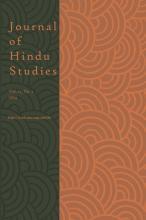
|
Pushya A Gautama Doctoral Student, Consciousness Studies Programme Book Review: The Practice of Texts: Education and Healing in South India. By Anthony Cerulli. https://academic.oup.com/jhs/article-abstract/17/2/282/7492157 Gautama, P. A. (2024). The Practice of Texts: Education and Healing in South India. By Anthony Cerulli. Journal of Hindu Studies, Oxford University Press Anthony Cerulli’s The Practice of Texts is a much needed book at a time when Ayurvedic education in India is receiving particular academic and policy scrutiny. In particular, it offers novel insight into the nature of modern Ayurvedic ‘gurukulas’ and the unique roles they serve, as fluid spaces within which ‘neo-traditions’ of Ayurveda evolve and are transmitted from practicing vaidya-gurus to students. It also masterfully reinterprets and transforms the very notion of the classical Ayurvedic text from a bounded, static re-telling of history, to a ‘fluid and conversational resource’ (pp. 40) that is a ‘field of knowing on which (the) vaidya-guru coordinates (her) interactions with patients (and students) (pp. 87)’. It is written with great nuance, both in terms of factual accuracy as well as anecdotal richness, and offers to the reader a rare and expansive presentation of the larger historical, political, and pedagogical frameworks within which the Ayurvedic gurukula exists and functions, in contemporary South India. |
